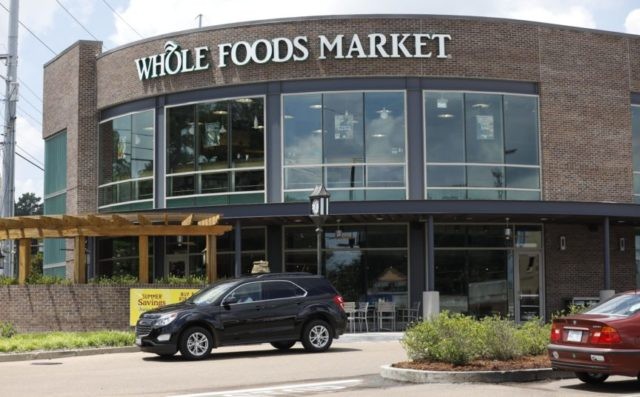“Would you like a side of kale with that cellphone battery?”
That sounds like an inquiry coming from your Alexa in the not-so-distant future as Amazon.com is set to purchase organic supermarket Whole Foods for $13.7 billion. The acquisition will firmly move the online retail behemoth into the realms of both the brick-and-mortar business as well as grocery.
Amazon will gain over 460 stores nationwide — including more than 80 in the state of California. And its presence will put major pressure on other groceries as Amazon is expected to use its considerable online retail muscle to create a giant network of food delivery service.
“The 40,000-square-foot market as we know it is a dinosaur,” Phil Lempert, the food trends editor for NBC’s Today, told the San Francisco Chronicle. “This is going to be a great shot in the arm for the industry.”
Amazon currently has a small grocery delivery arm named AmazonFresh. It’s a same-day grocery delivery service offered to only the company’s Prime members for a monthly fee of $14.99 and available in about just 20 U.S. cities.
With the acquisition of Whole Foods, “this adds 440 refrigerated warehouses within 10 miles of probably 80 percent of the population,” Michael Pachter, an analyst for Wedbush Securities, told the Los Angeles Times. “More importantly, it puts refrigerated distribution within 10 miles of probably 95 percent of Prime members. That means we can rely upon Whole Foods’ consistently high quality meat and produce, and can rely upon prompt delivery from the store as a distribution point.”
But make no mistake, the Whole Foods clientele, like Amazon’s Prime membership, is very much affluent and mostly urban and suburban. Ordinary Americans don’t necessarily crave quinoa salad with a side of basil-lemon dressing for lunch. It’s the reason Whole Foods was for sale in the first place, as the supermarket chain, derisively dubbed “Whole Paycheck” by some, has struggled to compete — even with other organic outlets such as Trader Joe’s.
The bigger picture is that for Jeff Bezos, founder and chief executive of Amazon, it’s just another piece of his empire-building. Amazon is adding its own logistics network, which was responsible for 43 percent of all online sales in the U.S. last year (while accounting for just 0.2 percent of the grocery and food market share).
“We will take all the capacity that the U.S. Postal Service can give us and that UPS can give us and we still need to supplement it,” Bezos said at Recode’s 2016 Code Conference in Rancho Palos Verdes, according to Bloomberg. “So we’re not cutting back. We’re growing our business with UPS. We’re growing our business with the U.S. Postal Service.”
And with Whole Foods’ brick-and-mortar stores, Amazon will soon have a ready-made apparatus for its delivery service in some of the nation’s most affluent markets. Pretty soon, you can indeed pick up some kale with that cellphone battery if you don’t want to have either dropped off at your front porch.
Follow Samuel Chi on Twitter @ThePlayoffGuru.

COMMENTS
Please let us know if you're having issues with commenting.